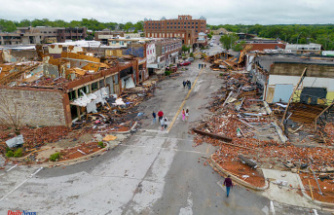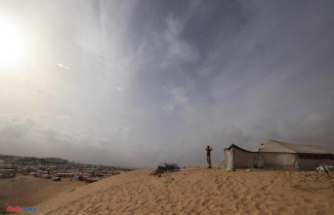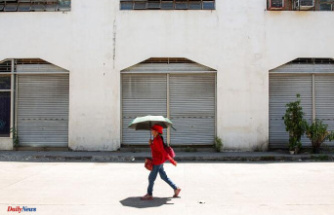Glaciers are independently moving masses of ice. This no longer applies to the Southern Schneeferner - it is now losing its status as a glacier. In the course of climate change, things are also looking anything but good for the other four German glaciers.
Garmisch-Partenkirchen (dpa/lby) - The hot summer has accelerated it further: Germany's glaciers are disappearing much faster than scientists expected until recently. The southern Schneeferner is now losing its status as a glacier, as the Bavarian Academy of Sciences announced on Monday. "Due to the low ice thickness, no more ice movement can be expected, so that the southern Schneeferner is no longer considered an independent glacier." Now there are only four glaciers left in Germany - which are also threatened by melting.
New georadar measurements from mid-September showed the great extent of the loss at the southern Schneeferner, the researchers said. It is therefore only half the size it was four years ago, has lost a lot of thickness - and probably no longer flows. In a year or two, according to the forecast, it will be gone completely.
Glaciers are large masses of mainly snow, firn and ice, which mostly flow slowly from mountains towards the valley. Only masses that move independently, at least to a large extent, are referred to as glaciers. Most of the glaciers that exist today were formed during the last ice age, around 15,000 years ago.
Glaciologists also observed extreme melting this year in other parts of the Alps. According to data from the University of Innsbruck, the seven square kilometer Hintereisferner in the Ötztal, one of the largest glaciers in Austria, lost five percent of its volume this year.
Scientists see climate change as the cause and have been warning of the consequences for a long time. The situation on the southern Schneeferner is not surprising, but "for everyone who deals with it", it is still bad news, said glaciologist Olaf Eisen from the Alfred Wegener Institute, the Helmholtz Center for Polar and Marine Research. "It's happening faster than we thought. Maybe the rest of the country will wake up now and understand where we are in terms of the climate crisis - and what impact that will have in Germany."
The chairman of the Federal Nature Conservation Association in Bavaria, Richard Mergner, also called on the Bavarian state government to finally take the fight against climate change seriously and vigorously. This includes the expansion of renewable energies. "In any case, the flimsy amendment to the Bavarian climate protection law with non-binding recommendations and vague goals is not suitable for slowing down climate change." The news from the southern Schneeferner painfully shows how dramatically global warming has already progressed.
Just last year, a panel of experts reduced its forecast for the remaining time for the glaciers from 30 to just 10 years - even that now seems outdated. In addition to the extreme heat of the summer, the Sahara dust in March played a role this year, laying a reddish layer on the snow. The darker dust absorbed more energy, and the ice underneath thawed more.
According to the Bavarian Academy of Sciences, the thickness of the ice on the southern Schneeferner has continued to decrease significantly in large areas and is no longer even two meters in most places. Even at the deepest point, the ice is now less than six meters thick, compared to around ten meters in 2018. "This suggests that the remaining ice will melt completely within the next one to two years," the scientists judge. At the same time, the glacier area has halved to less than one hectare since 2018.
Now the remaining ice masses are no longer considered glaciers. As a consequence, the surveys, which first took place in 1892 and have been repeated regularly since the middle of the 20th century, would be discontinued, it said.
The ice on the other four glaciers in Germany - the northern Schneeferner and Höllentalferner on the Zugspitze, as well as the Blaueis and Watzmanngletscher in the Berchtesgaden Alps - continued to melt this summer.
Since the cold period at the end of the 19th century, the ice had retreated further and further. At that time, the southern and northern Schneeferner and Höllentalferner on the Zugspitze were a large glacier called the Plattachferner, as Inga Beck, spokeswoman for the Schneefernerhaus environmental research station, explained. It is said to have had an extension of about 300 hectares at times. For comparison: The Höllentalferner, which has held up quite well so far, still had 16.7 hectares in 2018 - about half of the Oktoberfest area.












